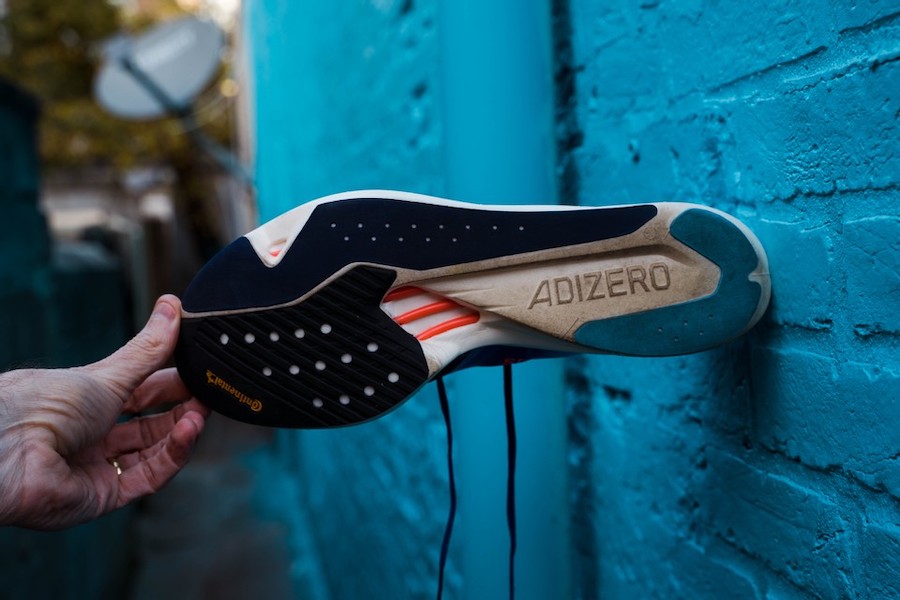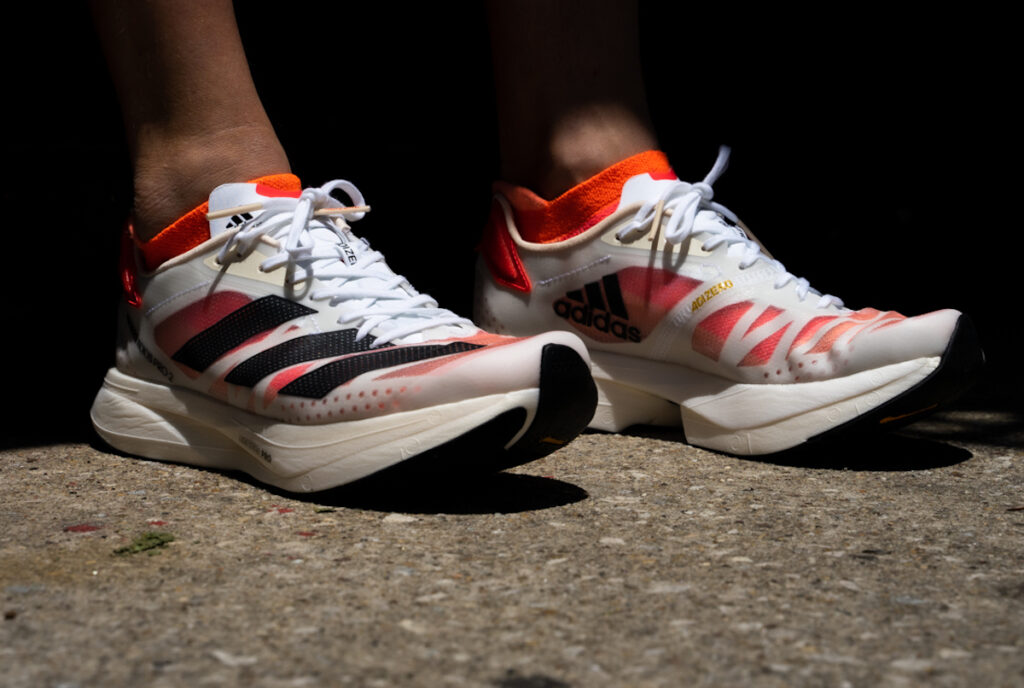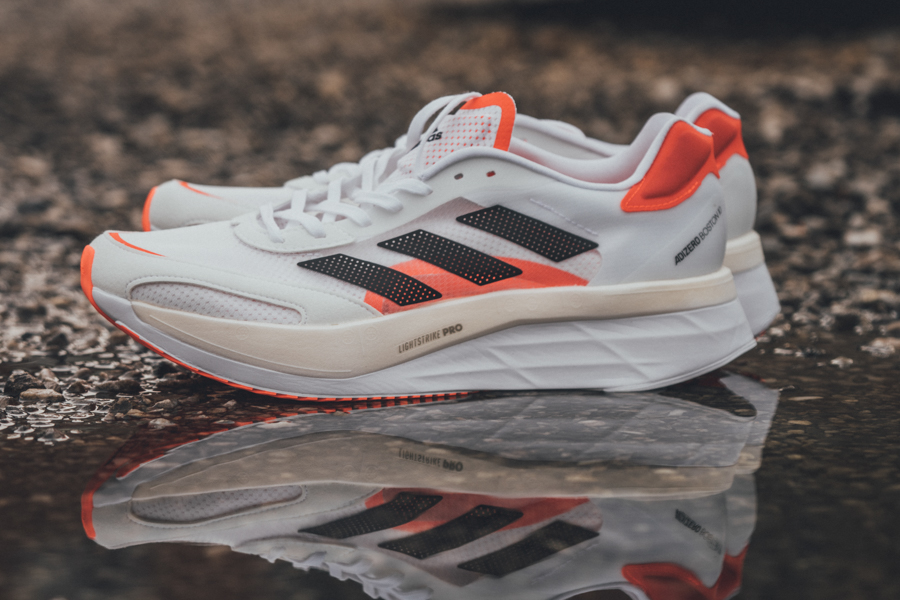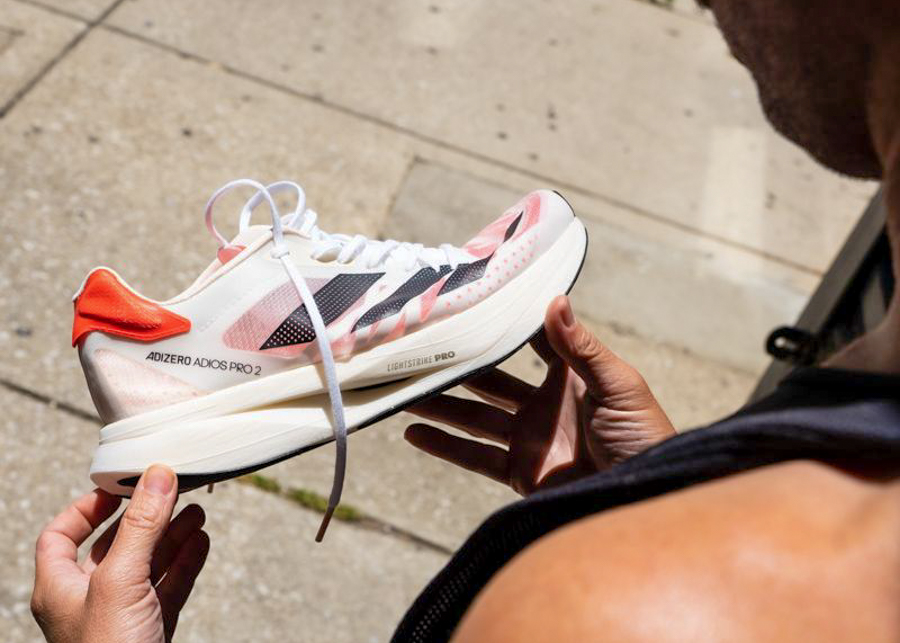
After a record-breaking inaugural event in 2021 and two world records shattered on the same day, the world’s best road runners will meet again in celebration and testament to Adidas’s commitment to its elite running community at this year’s Adizero Road to Records event on April 30 at Adidas HQ in Herzogenaurach, Germany.
World-class athletes set to make an appearance include Senbere Teferi and Kalkidan Gezaghen going head-to-head in the women’s 5K, Kibiwott Kandie, Rhonex Kipruto, and Tadese Worku battling it out in the men’s 10K, and Tamirat Tola and Kennedy Kimutai going against the clock in the men’s half-marathon. Senbere Teferi broke the women’s 5K world record (14:29) to take the win last year, and all eyes will be on her to see if she can repeat this feat again this year.
In honor of the late Agnes Tirop, who set the 10K world record at last year’s event, the women’s 10K will be renamed the “Agnes Jebet Tirop 10K”. In addition, Adidas will continue supporting the Tirop Angels Trust (known as Tirop’s Angels) — an organization founded by Kenyan athletes and Agnes Tirop’s family, which aims to prevent gender-based violence.
Developed with and honed for the fastest athletes, the Adizero range demonstrates a continued ambition by Adidas to constantly push boundaries and create shoes that will help athletes make their impossible possible. We had the opportunity to chat with Fabian Schweizer, Adidas Director of Athletic Servicing, and Melanie Knopp, Adidas Concept Testing Manager, to learn more about the latest developments in the Adidas Adizero range, as well as to discuss how Adidas incorporates athlete feedback into its product design process.
BITR: You’ve been with the company for over 15 years now. What kind of changes have you seen in how you approach technologies with your athletes?
FABIAN: As a bit of a dinosaur in a company that’s fairly young overall, historically, we’ve seen that innovation in running footwear has been really detailed, simply focused on re-tuning what has traditionally worked. Now suddenly, we’re experiencing a wave of innovation where we’re seeing a lot of new research that shows opportunities for product development. From foams, to materials, to stiffening elements, it’s becoming way more professional now.

BITR: In the last few years, the amount of technological innovation across the industry has been incredible. If you’ve read some of our previous reviews, you’re no newbie to the unique technologies of Adidas performance footwear. Notable technologies like their classic Lightstrike Pro foam and carbon fiber energyRODS keep us wondering what we’ll see next. We gained some insight into what the future of these innovations looks like and what we can expect to see from Adidas in the upcoming months.
Over at BITR we’re curious to hear more about the composition and development of Lightstrike Pro. Can you tell us more about the current Lightstrike composition and what other future midsole materials Adidas is currently working on?
FABIAN: Lightstrike Pro is able to provide a certain comfort and cushioning to protect the foot while simultaneously providing a lot of energy return. The Lightstrike Pro is something we can expect to see for quite some time; feedback from our professional athletes shows that it’s very well received. That being said, Lightstrike Pro is also something we are constantly developing and working on for the next generations. Unfortunately, I can’t reveal too much about the future because I don’t want to give anything away, but I can tell you we’re working on various projects spanning one year out, five years out, and ten years out. Innovation is never stopping, as it’s a key principle at Adidas.
MELANIE: Stay tuned for details to come in the next few months!

BITR: Is there anything you could share about the energyRODS from a durability standpoint? We’re curious about what the future of this technology looks like for Adidas, as we’ve seen these rods break in the past.
FABIAN: The famous energyRODS actually were born in Kenya during our time traveling there in 2019. We wanted to find a way to better reflect human anatomy, specifically the bones in the foot.
The energyRODs are very individual, just as each person’s running style is very individual. We have to closely examine factors like the way each individual runs, as well as their training load. Some running styles are very unique, allowing room for the energyRODS to adapt to your running style as well.
MELANIE: Right now, there are different versions of the energyRODS used depending on the shoe. For example, in the Adios Pro 1.0 and 2.0, the energyRODS are a lot stiffer, designed to give a more significant rolling effect. Compared to the Takumi Sen 8, these energyRODS are made from a glass fiber so that they bend a lot more and snap back, perfect for a middle-distance run. However, in the Adizero Boston 10, the primary durability comes from the foam; we use Lightstrike Pro foam as well as EVA. Still, the Adizero Boston 10 incorporates energyRODS to provide targeted support for the runner.

BITR: It’s always exciting to be able to wear the final product, but a LOT (and I do mean a LOT) of work goes into creating the best product. Fabian and Melanie were able to speak on what the design process is like as they work closely with some Adidas professional athletes to get feedback during the design process.
Sharing new products with the pros through testing trips and in-house lab sessions is crucial. What does a session typically look like, and how do you incorporate the athlete preferences you discover into the shoe design process?
FABIAN: We go through lots of different types of testing, including mechanical testing, where we learn more about the mechanical properties of our foams like the density, energy return, bending stiffnesses, tortionability, things of that nature. We also started incorporating athletes in biomechanics, which is usually done in a lab due to the need for a controlled environment. Motion capturing, force plates, pressure mapping, and the use of lots of sensors once we’re in the field. We do testing in many countries, including the US, Kenya, Ethiopia, and Japan. Ultimately, a lot of it comes down to subjective feedback. It’s really about understanding the feelings of professional athletes because they do what we can’t. When these pro athletes are doing back-to-back training sessions over the course of the week, we’re testing different types of products and are trying to listen in between the lines. We want to find the gold nuggets to help us make the prototype we’re testing better or that we can apply to even the next version of the shoe.
MELANIE: When we have athletes in-house, we have the chance to test new prototypes from the innovation process with them in the lab. We do both physiology and biomechanical testing with them. For example, to figure out the running economy of the shoes with our athletes, we’ll use a series of motion capture and high-speed filming to examine running efficiency. We also work a lot with the athletes by sending products to wherever they are in the world, so they can then test out the different prototypes on their home turf and provide us feedback. We’re then able to gather their responses to figure out if we’re heading in the right direction.
BITR: Whether you’re a 2:21 marathoner like newly crowned Boston Marathon champion Peres Jepchirchir or a non-marathoner like myself who likes to get in a few easy miles every once in a while, there’s something special to be said for being able to purchase and wear the same shoes the pros train and compete in.

What does it mean to you to not just have the ability to work with professional athletes but also to design products that will become available on the market to your average consumer?
MELANIE: When you see one of the shoes, for example, the Adidas Adios Pro 2.0 is one I’ve seen out on the road, you definitely feel proud to have worked on it. It’s also the same shoe that Peres Jepchirchir wore when she won the Olympic gold medal in the women’s marathon (editor’s note: since this interview, Jepchirchir also won the Boston Marathon in the same shoe)! The same product is being used by elite runners and the everyday consumers running past me. Definitely cool to be able to work on products that reach such a broad range.
You can expect many more awe-inspiring moments at this year’s Adizero: Road to Records event. Follow along through the livestream available on the Adidas Youtube channel on April 30th.
Portions of our interview were condensed and edited throughout this story.
Have something to say? Leave a Comment